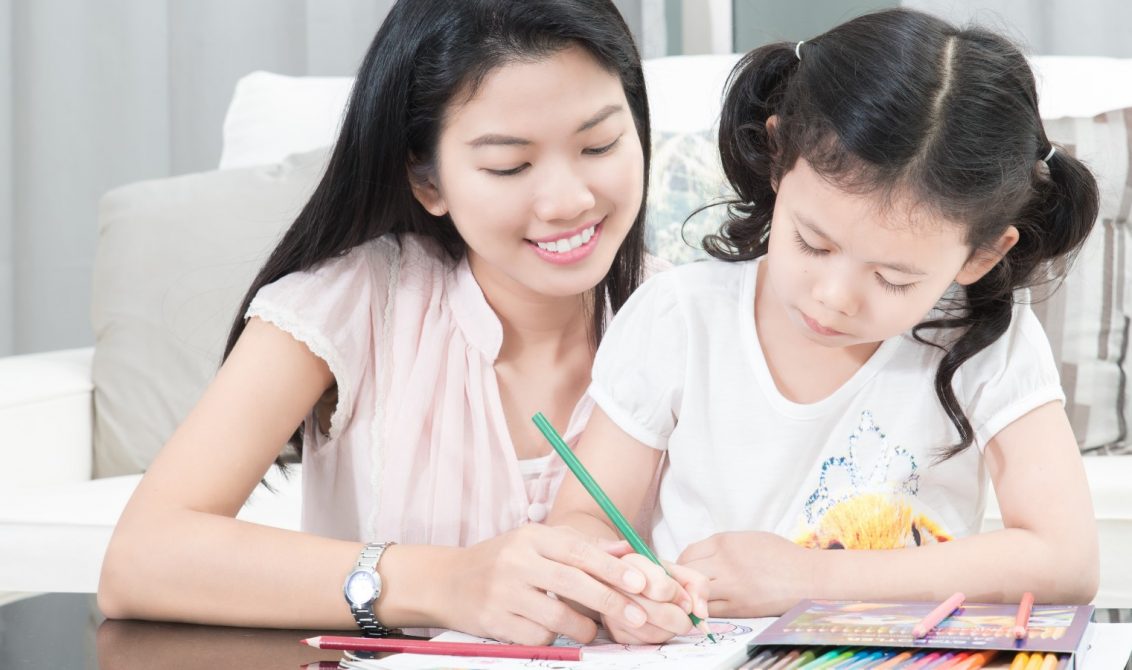
What are the potential obstacles to parent-teacher collaboration, and how can we overcome them to ensure that together both parties give each and every child the best chances in life?
The case for parents as partners
Decades of empirical research have identified that one of the most important factors affecting a child’s performance in school is how involved their parents are in their education. Where a healthy parent-teacher relationship exists,a child’s performance in school, both academically and socially improves .
Parents are the first educators of their child and have the most influence over them. They provide the role model for how children view education, relationships, and the world at large; they shape their young minds. Parents have the ability, through their guidance, to support and motivate their offspring. From the moment children are born it is the parents who showcase, develop and shape those important attributes of character such as grit, resilience, persistence, growth and curiosity. The child’s social and emotional well-being is most often demonstrated through the strength of their relationships.
Parents have their children for longer time periods. On average children are in school for 38/52 weeks each year, 5/7 days a week and 7/24 hours a day. In total, that’s just that 15% of their lives. Even accounting for children’s sleeping patterns, it is clear that we are the supporting act – all be it a very crucial one.
If our goal as educators is to make children life-ready, work-ready, world-ready, then parents really matter!
Barriers to collaboration
Firstly, I am not convinced that that each partner really understands the true value in this collaboration or the difficulties that each face.
From a working parent’s perspective, time is of a premium and working patterns can be inflexible to meet our needs. Additionally, childcare for siblings adds an extra pressure, especially for single parents. Many parents’ own experiences of school may not have been the best and so avoidance with educators can seem the better option. The barriers between parents and teachers become even more pronounced as the child transitions to Key stage 3 and 4, when communications between home and school relies on the young person themselves, delivering vital information.
From a school’s perspective, teachers often feel unsupported with increasing numbers of over-protective parents (often referred to as helicopter parents), who hover over their children micromanaging their friendships, protecting them from mistakes and taking umbrage when the teacher says ‘No’ ’to their child. Time and resources here are also in short supply with ever increasing expectations placed upon schools to deliver new strategies following the social ills of society. Harnessing parent power then, may seem less of a priority on which to focus their energies.
Our relationship with parents therefore, is often limited to involvement in activities such as attending parents’ evenings, which is more reactive, rather than engagement in learning, which is proactive (Definition Harris and Goodall 2007). So, despite parents having a wealth of knowledge, skills, qualifications and experience, we don’t harness this valuable resource or seek their understanding or insights into how best we can work in real partnership, to ensure that a child gets the best out of their education.
Mistrust between both parents and teachers can be the widest chasm to bridge for some of the children we teach.
Breaking down the barriers
If we intend to break down the barriers and build bridges then, like salesmen, we need to deliver an agile message, which highlights that neither party is the problem, it’s just the way we are working together. We need to acknowledge that whilst teachers are the experts at education, the parents are experts in their children. As allies, in a partnership of mutual respect and appreciation, we are better able to help every child navigate the learning landscape, coping with the uncertainty of life, dealing with frustrations, adapting to evolving conditions and learning how to learn. The warp and weft of life can be a tricky path to navigate for anyone, let alone a child.
One such inroad would be to utilise the work of behavioural scientists, who have garnered a great interest from large companies, advertisers and governments around the world. Their work, backed by data analytics has given us powerful insights into how parents and teachers can ‘nudge’ children towards beneficial behaviours, without heavy handed methods. As such, this is an area that can spark the interest of both teachers and parents and open up a conversation that could transform the way we work together.
For example, many schools ask parents to support their children with homework assignments. For some families this can often lead to arguments and parents feeling helpless. Homework is one of the most common flash points between children and parents. A straightforward task can easily take twice as long at home with all the distractions and delaying tactics that go with it. However, if we turn to behaviour scientists, we can support parents in having more constructive conversations with their children and help them to avoid the very distractions that prolong the task set.
Imagine a typical conversation between a teenager and their parent:
‘What homework do you have this weekend?’ the parent asks, while awaiting the all-to-familiar reply:
‘Not much, couple of things, the usual.’
The child in this case has closed the conversation down which often is where the tension begins. However, research conducted in the UK demonstrated that when parents receive timely information by text message, with little prompts to encourage specific conversations about what had been learned that day, homework or up-and-coming tests, the conversation changed. Of note, texts were specific, time related and focused on something a parent could actually do, for example, ‘Please remind him to study.’
So, the conversation may change to:
‘You have an English test on Friday. Can I help?’
The findings of this research showed that children whose parents received the texts outperformed students whose parents did not – well worth it for something that cost very little to implement and a simple technique to engage even those hard to reach parents.
Another example, ‘The Marshmallow Experiment,’ conducted by Walter Michel, shines a light onto why some children are able to avoid distractions more than others. In these experiments 5-year-old children were given the choice to eat one marshmallow immediately, or to wait just 15 minutes more to receive a second marshmallow.To put this in context for you, that extra 15 minutes, to a 5-year-old, would be like waiting until the end of the week for that much needed glass of wine!
The experiment, in essence, was testing whether the children had the self-control to resist the instant gratification through eating the marshmallow straight away, against waiting the extra 15 minutes to gain a bigger reward, in this case the second marshmallow.
Studies have identified that children with better self-control are more likely to live happier, healthier lives and be law abiding citizens. (Moffitt T.E Arsenault et al, A gradient of childhood self-control predicts health, wealth and public safety, 2011.) Walter Michel’s research demonstrated similar findings in that, those children who showed restraint and self-control were found to have higher exam scores when interviewed 10 years later. So, how did they avoid the temptation? Some kept their mind off the prize by turning their heads away, some sung, others looked up at the ceiling, while a few were gainfully employed in picking their nose. (Ignitermedia.com on YouTube shows some interesting footage).
The research identified that the children who could wait were using strategies that could be taught, so the experiment was repeated with the marshmallow being hidden from view. This enabled children to wait on average 10 times longer. By understanding this simple method of friction, and highlighting it to parents, we can support them in understanding how to help their children avoid distractions when faced with homework.
Parents together with their children could be encouraged to write down all the things that act as distractions from the task in hand. Once the distractions have been identified, the parents and children negotiate one strategy together that could be used should temptation rear its ugly head – in essence, adding friction. So, in the case where, for example, social media acts as the distraction, the agreement could be that the mobile phone is handed to the parent for an agreed time while the homework task is completed. Handing a snack over, after a hard day at school, in exchange for the phone is always an added bonus! This simple technique, of parents and children identifying distractions and adding friction, has helped many children and adults alike to reach their goals.
It’s often the smallest things that make the biggest changes, like these simple tools that, when highlighted, could harness the power of the parent, so together as experts in our own fields, we both provide the very best for the children in our care.
About the author
Karine George is an award-winning educationalist and international keynote speaker with a passion for re-imagining the future. She was a headteacher for more than 20 years in a school rated as Outstanding by Ofsted. She has written articles on a range of educational issues and is a contributing author to ‘Sustainable School Transformation’ (Bloomsbury, 2013).

